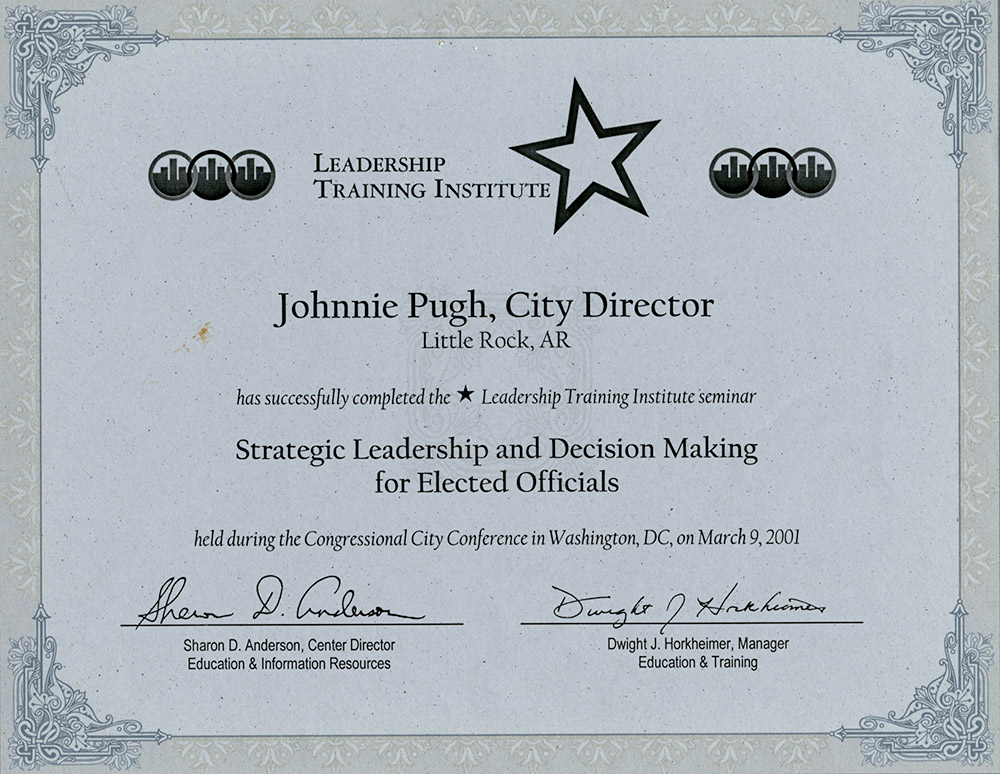Federal leadership training plays a pivotal role in shaping effective leaders within the government, equipping them with the skills and knowledge to navigate the complexities of public service. This comprehensive training empowers individuals to excel in their roles, drive organizational success, and ultimately serve the nation with distinction.
From developing core competencies to embracing innovative training methods, federal leadership training encompasses a wide range of programs and approaches. By investing in the development of its leaders, the government fosters a culture of excellence, innovation, and accountability.
Federal Leadership Training Programs

Federal leadership training programs are designed to enhance the leadership skills and knowledge of federal employees. These programs aim to develop a workforce that is equipped with the necessary skills to effectively lead and manage in a complex and ever-changing federal environment.
Objectives of Federal Leadership Training Programs
The objectives of federal leadership training programs typically include:
- Developing leadership skills, such as communication, decision-making, and problem-solving.
- Enhancing knowledge of federal policies, regulations, and procedures.
- Promoting collaboration and teamwork among federal employees.
- Preparing employees for leadership roles within the federal government.
Types of Federal Leadership Training Programs
There are various types of federal leadership training programs available, including:
- On-the-job training:This type of training provides employees with the opportunity to learn from experienced leaders while working on real-world projects.
- Classroom training:This type of training involves attending formal classes and workshops to learn about leadership concepts and skills.
- Online training:This type of training allows employees to learn at their own pace and on their own time through online modules and courses.
- Mentoring and coaching:This type of training involves pairing employees with experienced leaders who provide guidance and support.
Benefits of Participating in Federal Leadership Training Programs
There are many benefits to participating in federal leadership training programs, including:
- Increased leadership skills and knowledge.
- Improved job performance.
- Increased career opportunities.
- Enhanced ability to contribute to the success of the federal government.
Core Competencies for Federal Leaders

Effective federal leaders possess a unique set of core competencies that enable them to navigate the complexities of government and lead their teams to success. These competencies form the foundation of their ability to drive organizational performance, foster collaboration, and uphold ethical standards.
Federal leadership training provides a solid foundation for aspiring leaders. However, to enhance your skills and advance your career, consider pursuing an executive leadership master’s degree. This specialized program deepens your understanding of leadership principles and prepares you for senior-level roles.
By combining the insights gained from your federal training with the knowledge and skills acquired in an executive leadership master’s degree, you can excel in the competitive federal leadership landscape.
Developing these competencies is crucial for federal leaders to thrive in their roles and make a meaningful impact. It empowers them to adapt to evolving challenges, build strong relationships, and inspire their followers to achieve excellence.
Leadership and Vision
- Articulate a compelling vision and inspire others to share it.
- Foster a culture of innovation and continuous improvement.
- Lead by example and demonstrate integrity and ethical behavior.
Strategic Thinking and Decision-Making
- Analyze complex issues and develop sound strategies.
- Make data-driven decisions and manage risk effectively.
- Think creatively and identify opportunities for improvement.
Communication and Interpersonal Skills
- Communicate clearly and persuasively in written and verbal formats.
- Build strong relationships and foster collaboration.
- Resolve conflicts effectively and promote teamwork.
Results Orientation and Accountability
- Set clear goals and hold themselves and others accountable.
- Measure progress and make adjustments as needed.
- Drive performance and deliver exceptional results.
Integrity and Ethical Conduct
- Uphold the highest ethical standards and comply with all laws and regulations.
- Promote transparency and accountability.
- Avoid conflicts of interest and maintain impartiality.
Training Methods and Delivery

Training methods play a pivotal role in the effectiveness of federal leadership training programs. Various methods are employed to cater to diverse learning styles and program objectives.
Each training method offers unique advantages and disadvantages. Understanding these characteristics enables program designers to tailor delivery methods to optimize learning outcomes.
Instructor-Led Training (ILT)
ILT involves face-to-face interactions between a trainer and participants. It offers opportunities for real-time feedback, discussions, and hands-on exercises.
- Advantages:
- Immediate feedback and clarification
- Engaging and interactive
- Facilitates team-building and networking
- Disadvantages:
- Time-consuming and expensive
- Geographical constraints
- Limited flexibility
Virtual Instructor-Led Training (VILT)
VILT leverages video conferencing technology to deliver ILT remotely. It offers similar benefits to ILT, but with greater flexibility and accessibility.
Federal leadership training provides a solid foundation for government employees, but personal leadership coaching can take your leadership skills to the next level. Personal leadership coaching focuses on your unique strengths and challenges, helping you develop a personalized leadership style that drives results and empowers your team.
By combining federal leadership training with personal leadership coaching, you can unlock your full leadership potential and become an exceptional leader in the government sector.
- Advantages:
- Convenience and accessibility
- Cost-effective compared to ILT
- Scalable to large groups
- Disadvantages:
- Limited interpersonal interactions
- Technical challenges can disrupt sessions
- May require additional equipment and support
E-Learning
E-learning refers to self-paced, online learning modules. It provides flexibility and accessibility, allowing participants to learn at their own pace and schedule.
- Advantages:
- Convenient and accessible
- Cost-effective and scalable
- Allows for customized learning paths
- Disadvantages:
- Limited social interaction
- May require self-discipline and motivation
- Technical issues can hinder progress
Blended Learning
Blended learning combines multiple training methods, such as ILT, VILT, and e-learning, to create a comprehensive learning experience. It offers the benefits of each method while addressing their limitations.
Federal leadership training is crucial for developing effective leaders in government agencies. To enhance their abilities further, consider incorporating emotional intelligence leadership training. This training equips leaders with the skills to manage emotions, build relationships, and create a positive work environment, which are essential for success in federal leadership roles.
- Advantages:
- Customizable and flexible
- Enhances engagement and retention
- Accommodates diverse learning styles
- Disadvantages:
- Can be complex to design and implement
- May require additional resources and support
- Not suitable for all learning objectives
Recommendations for Effective Training Delivery Methods
The effectiveness of training delivery methods depends on factors such as program objectives, participant characteristics, and resource availability. Here are some recommendations for choosing and implementing effective training delivery methods:
- Consider the learning objectives:Different training methods are better suited for specific learning outcomes. For example, ILT is ideal for skills development, while e-learning is more appropriate for knowledge acquisition.
- Assess participant characteristics:Consider the learning styles, preferences, and availability of participants when selecting training methods. Blended learning can accommodate diverse learning styles, while e-learning may be more suitable for self-motivated learners.
- Evaluate resource availability:Training methods vary in terms of cost, time, and equipment requirements. Ensure that adequate resources are available to support the chosen delivery method.
- Use a blended approach:Blended learning offers the benefits of multiple training methods while addressing their limitations. It can enhance engagement, cater to diverse learning styles, and accommodate varying participant availability.
- Incorporate technology:Technology can enhance training delivery by providing interactive simulations, virtual reality experiences, and online collaboration tools. Consider incorporating technology into training programs to enhance engagement and learning outcomes.
Outcome Summary

In conclusion, federal leadership training is an indispensable investment in the future of government leadership. By equipping individuals with the necessary skills, knowledge, and mindset, these programs empower leaders to make a lasting impact on their organizations and the nation as a whole.
As the government continues to face evolving challenges, the importance of ongoing leadership development cannot be overstated.
Commonly Asked Questions: Federal Leadership Training
What are the benefits of participating in federal leadership training programs?
Federal leadership training programs offer numerous benefits, including enhanced leadership skills, increased knowledge of government operations, expanded professional networks, and opportunities for career advancement.
What are the core competencies required for effective federal leaders?
Effective federal leaders possess a combination of core competencies, including strategic thinking, communication skills, problem-solving abilities, collaboration skills, and ethical decision-making.
What are the different training methods used in federal leadership training programs?
Federal leadership training programs utilize a variety of training methods, such as classroom instruction, online learning, simulations, coaching, and mentoring.